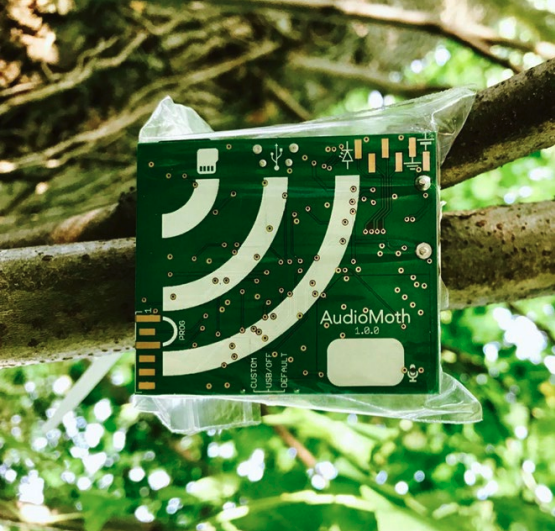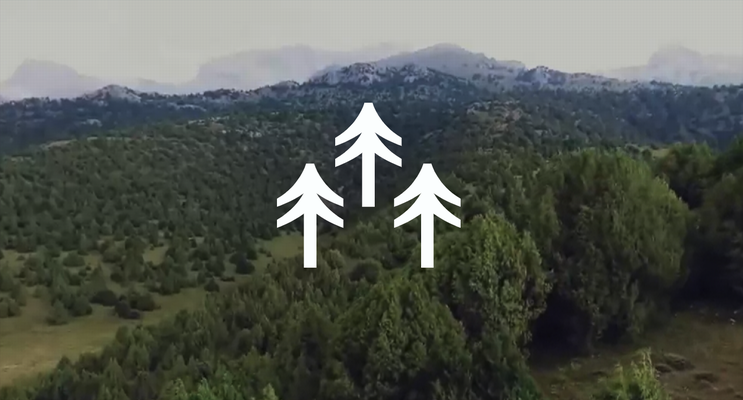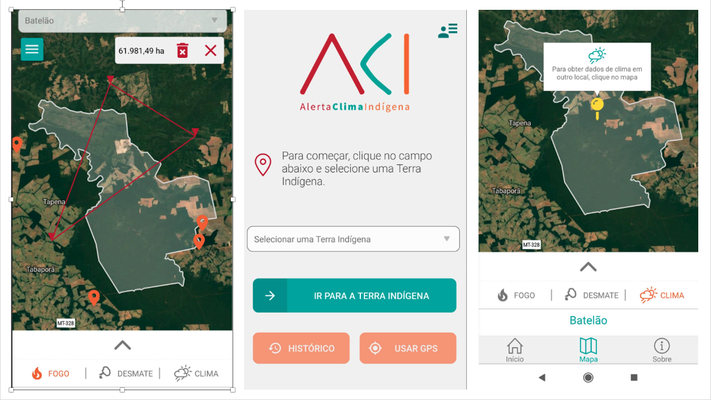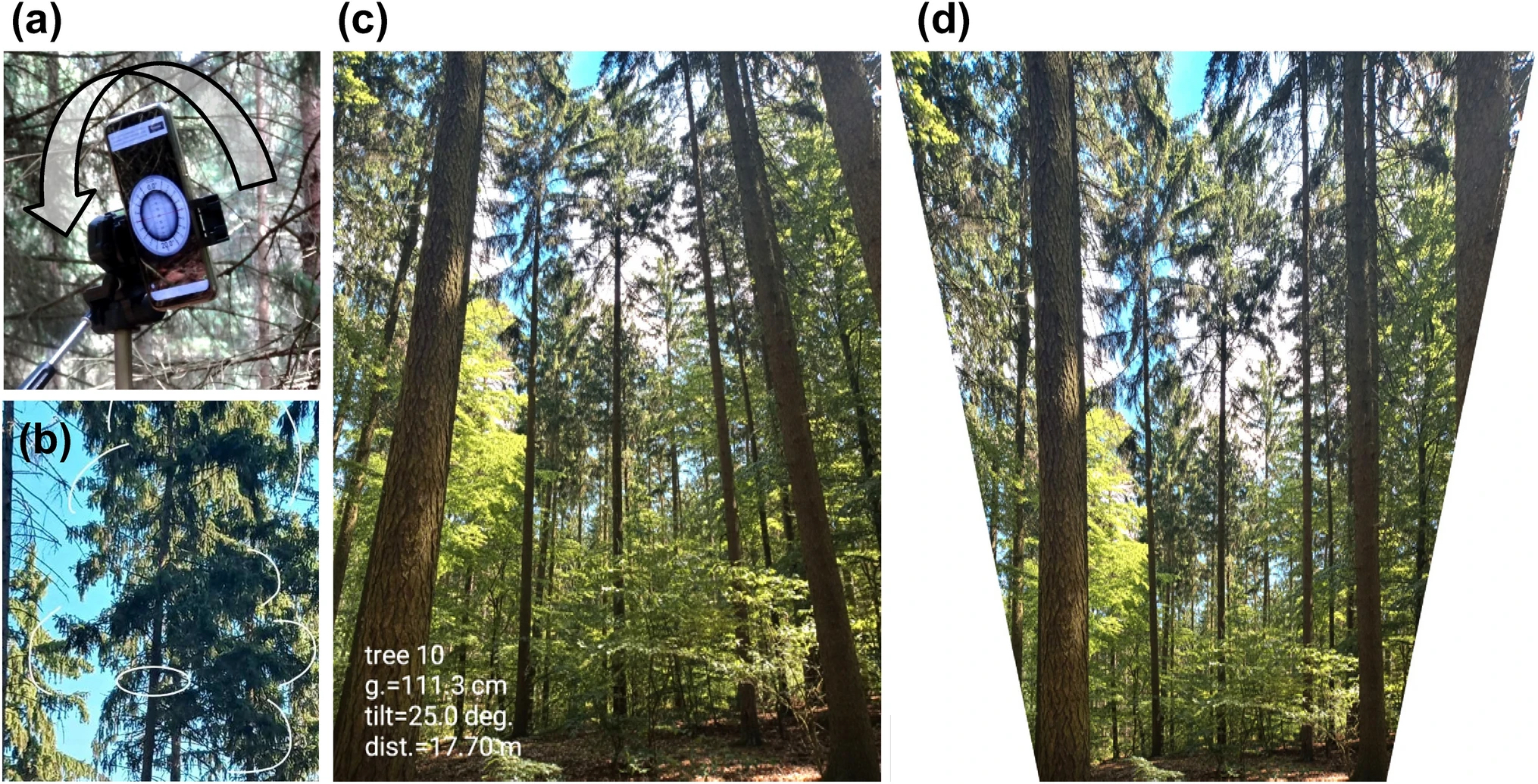Unsettling Participation: How More-than-Human Entities Shape Digital Forest Practices
Forests are not just a collection of plants and trees , they are complex ecosystems with countless entities interacting and participating in their creation, maintenance, and degradation. The Smart Forests Atlas shares different entries that involve human stakeholders, but on a closer look many more-than-human entities are also involved. This Atlas Story summarizes a new publication in Environmental Humanities in which we foreground the critical role of more-than-human entities and relations in shaping digital forest technologies.
In participatory initiatives in forest environments, humans are usually considered as the primary stakeholders. With the use of digital technologies , activities such as participatory monitoring or forest management have offered possibilities for more democratic engagements with local communities and forest inhabitants. However, these projects often involve distinct human stakeholders with decision-making power, and exclude those without the privileges to intervene. Participation in forests has thus become settled as an activity that prioritises certain stakeholders over others. While this can challenge existing hierarchies, it also reinforces privilege and power.
To challenge this anthropocentric understanding of forests as spaces to be managed and monitored by humans, this text explores three processes of “unsettling” that reveal how more-than-human entities and relations disrupt, transform, and reshape digital participation. By challenging conventional ways of thinking about participation, we argue for more pluralistic framings where many different entities contribute to the (re)making of forest environments.

Acoustic monitoring device 'AudioMoth' is an acoustic monitoring device that was developed through initial research with cicadas. Image from Hill et al. 2017
Bioindicators as Participants who Shape Digital Practices
The first “Unsettling” process involves the ways in which forest organisms are acting as bioindicators. Cicadas , with their infamous mating sounds, are one example of such bioindicators in forests. A trillion-member swarm of periodic cicadas lives underground for exactly seventeen years before bursting through the soil all at once in the north-eastern United States. Every seventeen years, the technology with which their presence is captured has evolved. Their overwhelming auditory presence is nowadays monitored through acoustic technologies that shape new understandings of environmental changes. Not only in the U.S. but in many different places, cicada songs are recorded through digital technologies such as AudioMoth. Through these acoustic monitoring technologies, it was found that cicadas are adapting their lives in response to environmental changes. As bioindicators, cicadas and many other forest organisms are signalling and expressing environmental events such as extinction, pollution, weather patterns, and radiation. Such findings shape new practices for understanding forests. By attending to the ways these forest organisms inspire and shape new digital monitoring technologies, these living entities become more dynamically involved in transforming our understandings of forests and environmental change. Rather than passive entities that are subjected to data capture, attending to more-than-human participation reveals how bioindicators are actively inspiring new forms of relating and sensing .

Terra0 proposes a forest that owns itself through blockchain technology. Screenshot of the Terra0 homepage via terra0.org
The Forest that Owns Itself?
The second process of “Unsettling” speculates on how blockchain infrastructures and decision-making algorithms can reshape forest ownership structures. Terra0 is an ongoing art project that prototypes a forest that owns itself. By assigning each tree with a digital token and following an economic model that manages the forest’s resources, this project brings up questions regarding the meaning of decision-making through algorithms and what more-than-human self-ownership could entail. However, as a human-made algorithm , this digital process cannot operate outside of its human encoded variables and infrastructures. In this example, further detailed in the article, the forest’s autonomy remains limited to how it can exchange resources within human capitalist systems. Furthermore, the self-owned forest is defined through decision-making by trees and does not involve other forest entities that are needed to sustain itself. Nonetheless, this speculative project helps to rethink forest futures and uses digital technology to foreground how other entities propose forests differently. This attempt at reconfiguring more-than-human participation illustrates that algorithmic processes must be further reworked to better align with the complexity of forest ecosystems.

The Alerta Clima Indígena App is an example of technology that documents local more-than-human knowledge practices. Screenshots of the Alerta Clima Indígena App [Android]
Participation of Digital Technologies in More-than-Human Indigenous Collectives
The third “Unsettling” process engages with Amerindian perspectivism and its potential to change how digital technologies can redistribute subjectivities. Digital practices are increasingly used to manage Indigenous territories, leading to both further extraction and possibilities for monitoring forest degradation. Conventional approaches of involving Indigenous voices in participatory projects could enrich digital practices in forests. However, these also runs the risk of erasing Indigenous knowledge when the results don't fully consider the ontological dynamics that shape Indigenous cosmologies and forest environments. This new paper considers how a deeper engagement with Amerindian cosmologies can foreground the stories, histories, and cultural relations that are formed by both humans and more-than-human entities in forests. Thereby, rather than imposing new technologies onto Indigenous territories, digital practices can become more respectful participants within the more-than-human collectives that sustain them. One example of a digital platform with the potential to engage with local knowledge practices in the Brazilian Amazon is the Alerta Clima Indígena App . By documenting observations and forest relations that include traditional practices and relations with animals, plants, sacred sites, and other entities these technologies become instruments with which more-than-human entities are understood, negotiated, and rendered legible. Rather than developing digital technologies that erase Indigenous knowledge, they can instead become more responsive to the more-than-human cosmologies in which they operate. Digital technologies should not be imposed on Indigenous forest territories as an external solution to address their issues, but rather become integrated as a respectful participant within the more-than-human societies that shape and inhabit forests.
In a time when forests are rapidly disappearing, it is crucial to consider the significance of more-than-human participation in creating and maintaining flourishing ecosystems. By broadening our understanding of forest participation to include more-than-human entities, we can develop more pluralistic and relational digital practices. These three processes of “Unsettling” are far from the only possibilities for multispecies and more-than-human participatory thinking with forests and digital technologies. Yet they can help to undo a singular understanding of participation as a form of human stakeholder involvement. They contribute new ways of thinking about participatory processes that include the world-making practices of more-than-human entities and relations. By moving beyond limited and conventional approaches to participation, such narratives have the potential to disrupt industrialized and institutionalized forest practices and foreground more-than-human ideas for constituting and using digital technologies.
___
To read the full paper see:
Westerlaken, Michelle, Jennifer Gabrys, Danilo Urzedo, and Max Ritts. 2023. Unsettling Participation by Foregrounding More-Than-Human Relations in Digital Forests , Environmental Humanities, 15(1), 87–108, https://doi.org/10.1215/22011919-10216173.
Header image: Illustrations by science-artist Cornelia Hesse-Honegger, who collected, studied and painted morphologically disturbed insects, mostly true bugs. These insects were found in the fallout areas of Chernobyl as well as in the proximity of many other nuclear installations and show the impact of radiation on other species. As bioindicators, the insects signal ecological disturbance. Each of the illustrations is further detailed at Groundwork Gallery.
Smart Forests Atlas materials are free to use for non-commercial purposes (with attribution) under a CC BY-NC-SA 4.0 license. To cite this story: Westerlaken, Michelle, "Unsettling Participation: How More-than-Human Entities Shape Digital Forest Practices," Smart Forests Atlas (2023), https://atlas.smartforests.net/en/stories/unsettling-participation. DOI: 10.5281/zenodo.13868629.


